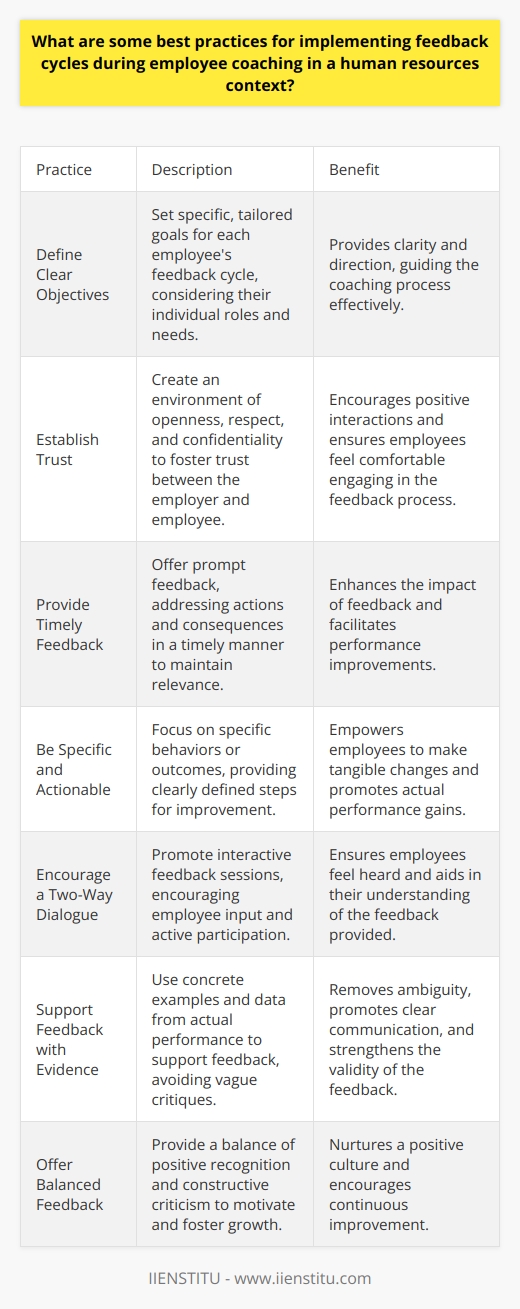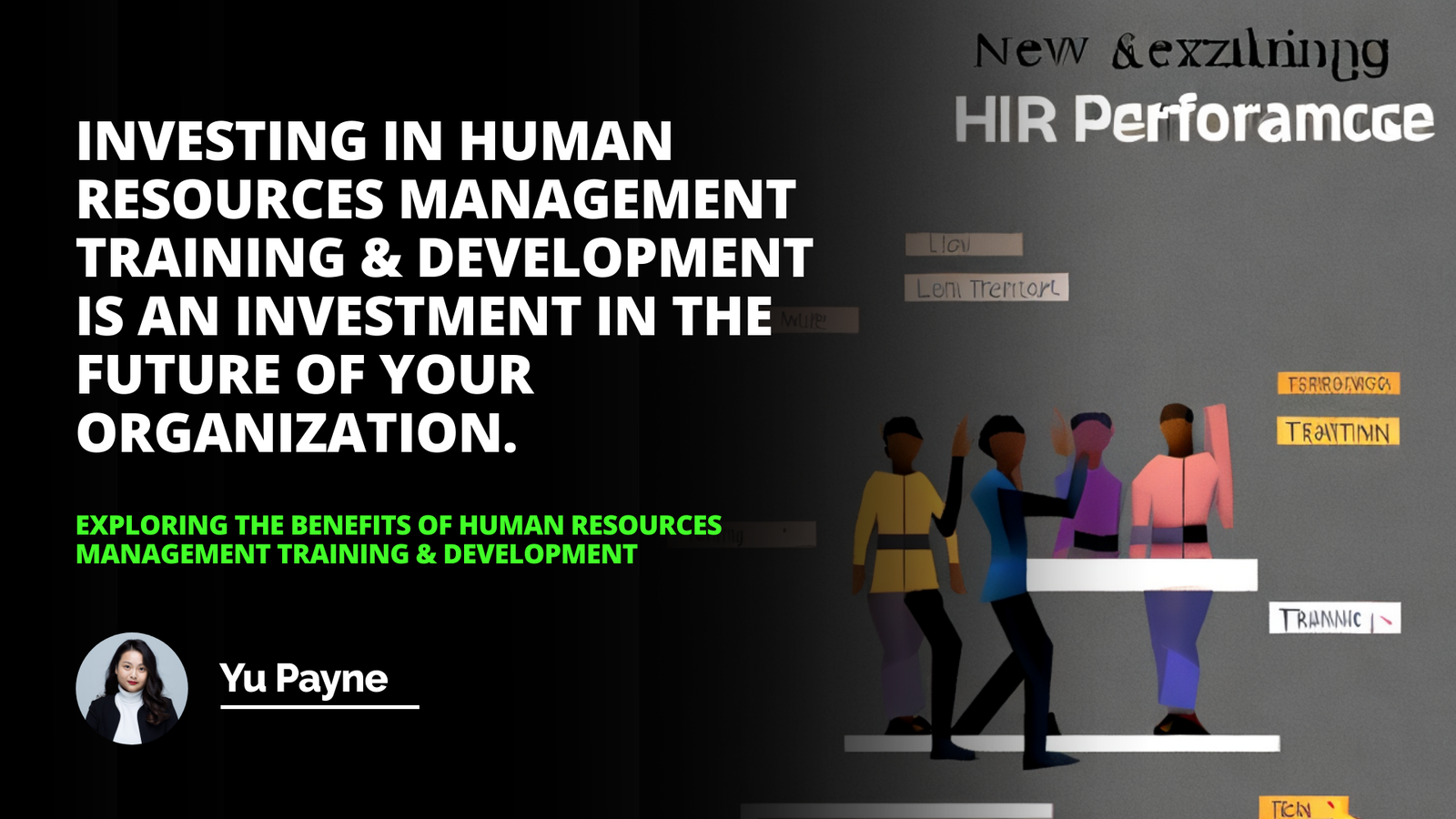
In the complex and dynamic environment of contemporary business, the upskilling of employees is essential for maintaining a competitive edge. Human resources certification and continued professional development play pivotal roles in this regard, with HR employee coaching emerging as a fundamental strategy to support workplace success. This specialized coaching enhances the overall performance and motivation of employees by addressing individual needs and fostering a growth-centered work atmosphere.
Understanding HR employee coaching, along with its significance and implementation, is thus critical for any corporation intent on cultivating a robust and creative workforce. This blog post aims to provide a comprehensive exploration of HR employee coaching strategies, emphasizing their impact on organizational success and incorporating online certification courses as a resource for advancing coaching skills.
Understanding HR Employee Coaching
Definition of HR Employee Coaching
HR employee coaching is a tailored, interactive process where HR professionals guide and support employees in developing their skills, achieving goals, and maximizing their potential. It is a personalized approach to professional development, distinct from generic training programs, as it focuses on the individual's unique strengths and challenges. HR employee coaching involves setting specific objectives, creating actionable plans, and monitoring progress to ensure alignment with both personal career aspirations and the organization's strategic direction.
Differentiating between HR Employee Coaching and other HR Responsibilities
While HR encompasses a broad spectrum of responsibilities, including recruitment, payroll, compliance, and more, HR employee coaching stands out as a practice aimed at fostering employee growth on an ongoing basis. Unlike periodic performance reviews or disciplinary actions that react to problems after they occur, coaching is a proactive and continuous engagement. It embraces a developmental ideology, placing an emphasis on guiding employees towards a trajectory of continuous improvement rather than merely evaluating past performance.
Roles of an HR Employee Coach
1 - Clear Setting of Performance Expectations
An HR employee coach works to clearly define and communicate the performance expectations relevant to the employee's role. By outlining objectives and benchmarks, the coach ensures that employees understand what is expected of them and how their success will be measured. This often involves working collaboratively with employees to identify key performance indicators (KPIs) that are relevant and attainable.
2 - Gauging Employee Strengths and Areas of Improvement
The coach plays a crucial role in identifying each employee's strengths and helping them leverage these to their advantage while also pinpointing areas that require improvement. This involves a thoughtful assessment that can lead to personalized strategies catering to the individual's learning style and professional development needs.
3 - Developing Individualized Coaching Plans
With an understanding of an employee's unique attributes, the coach can develop a customized coaching plan. This plan outlines the specific actions, learning resources (including online certification courses when applicable), and milestones required for the employee to achieve their career objectives in alignment with organizational goals.
The Significance of HR Employee Coaching
The Impact of Coaching on Employee Performance
Consider a scenario where an employee, Jane, struggled to meet her sales targets. Through HR coaching, Jane's strengths in relationship-building were identified, and she received guidance on how to leverage these in negotiations. As a result of this personalized coaching plan, Jane improved her sales performance by 25% within the next quarter, demonstrating the tangible benefits of targeted employee coaching.
Effect of Coaching on Employee Retention
At the tech firm X-Corp, turnover rates were high due to market demands and job stress. Introducing a robust employee coaching program helped the firm to retain its top talent by 35% more compared to the previous year. Employees like Mike, a senior developer, who considered leaving, found new avenues for career advancement and skills enhancement through coaching, which played a pivotal role in his decision to stay with the company.
Influence of Coaching on Company Culture and Work Environment
ABC Logistics reshaped its company culture from the top-down with a focus on employee coaching. By nurturing open communication and providing regular support through HR coaching, the level of employee engagement surged. Team collaboration and job satisfaction improved as individuals felt valued and understood, creating a ripple effect that transformed the work environment into a thriving and supportive space.
Core Elements of Effective HR Employee Coaching
Goal Setting
Importance of Realistic and Challenging Goals: The foundation of successful HR employee coaching lies in the establishment of goals that are both challenging and achievable. Goals should stretch the employee's capabilities without being so daunting as to demotivate. They need to be clearly articulated and aligned with both personal aspirations and the company's strategic objectives.
Techniques for Effective Goal Setting in Coaching: Effective goal setting involves the SMART criteria – making goals Specific, Measurable, Achievable, Relevant, and Time-bound. This ensures a structured approach that helps employees focus their efforts and measure their progress clearly.
Providing Constructive Feedback
Feedback is an indispensable part of the coaching process, offering an opportunity for growth and learning. Effective HR coaches know how to deliver feedback in a way that is constructive, specific, and focused on behavior rather than personal traits. This approach fosters a positive atmosphere where employees are encouraged to develop without feeling judged or discouraged.
Employee Development and Empowerment
A key goal of HR employee coaching is to empower employees to take charge of their development. Strategies may include providing challenging assignments that push the individual's comfort zone, offering mentorship opportunities, and supporting the acquisition of further qualifications through online certification courses or other forms of continuing education. Encouraging self-reflection and self-assessment also promotes a sense of ownership and self-efficacy.
Implementing HR Employee Coaching in Your Organization
Choosing your HR Coaching Team
Selecting the right individuals to serve as HR coaches is critical to the success of any coaching program. Coaches should not only have expertise in HR practices and the specific business domain but also possess strong interpersonal skills and a sincere commitment to helping others succeed. They should be adept at listening, providing feedback, and inspiring trust and confidence in their coachees.
Establishing Clear Coaching Guidelines and Processes
For coaching to be effective, it must be structured and consistent. Organizations need to establish clear coaching guidelines that outline the objectives of the program, the roles and responsibilities of coaches and coachees, and the process through which coaching will be carried out. This sets expectations and ensures that everyone involved knows how to engage in the coaching relationship productively.
Continuous Evaluation and Improvement of HR Coaching Practices
Continual improvement of the coaching program is essential for its long-term efficacy. Techniques such as 360-degree feedback, regular check-ins, and performance metrics can be invaluable in evaluating the impact of coaching on the individual and organizational levels. Collecting and analyzing this data not only reveals areas for enhancing coaching strategies but also reinforces the value coaching brings to the company.
The adoption of HR employee coaching can significantly enhance the potential of employees and, by extension, the performance of the organization. By underscoring the importance and benefits of personalized coaching practices, organizations can foster an environment that is ripe for development, innovation, and success. Encouraging organizations to embrace these practices not only aids in employee retention but also contributes to a more vibrant and effective company culture.
As we reflect on the power of HR employee coaching, it becomes evident that an investment in these strategies is an investment in the organization's most valuable asset—its people. I invite readers to engage in further discussion and share their comments on utilizing HR employee coaching to its fullest potential, fostering an environment of continuous learning and improvement.
Frequently Asked Questions
What are the key factors to consider when developing effective coaching strategies within human resources?
Key Factors in Effective Coaching Strategies
Understand Organizational Goals
Effective coaching aligns with an organization's vision. Coaches must know these goals. They shape coaching objectives. They anchor strategic development. Understanding fosters relevant coaching initiatives.
Know the Employees
Employee awareness remains critical. Individual strengths, weaknesses, and aspirations matter. Knowledge enables personalized coaching strategies. It respects diverse learning styles and paces.
Set Clear Expectations
Clarity in expectations breeds success. Coaches must articulate goals. Employees need to understand their targets. Clear expectations guide the coaching process. They eliminate ambiguity.
Foster a Positive Environment
Positivity enhances learning. A supportive atmosphere encourages growth. It permits vulnerability and risk-taking. It builds trust between coaches and employees.
Utilize Effective Communication
Communication binds coaching relationships. It must be clear, consistent, and constructive. Feedback loops are essential. They confirm understanding and drive progress.
Build Accountability Structures
Responsibility ensures commitment. Coaches and employees must hold each other accountable. Progress tracking aids this. It validates the coaching approach.
Embrace Flexibility and Adaptability
Change is inevitable. Successful coaching adapts to new challenges. Flexibility allows modification of strategies. It responds to evolving employee needs.
Encourage Self-Reflection
Self-awareness propels growth. Coaches should promote reflective practices. Employees learn from self-assessment. This fosters independent problem-solving skills.
Commit to Ongoing Development
Learning never ceases. Coaches must model continuous improvement. Professional development opportunities are crucial. They keep coaching methods fresh and effective.
Measure Outcomes
Assessment validates coaching. Measurement tools must align with predefined goals. They provide feedback for strategy improvement. Outcomes inform future coaching efforts.
In summary, developing effective coaching strategies within human resources hinges on aligning with organizational goals, understanding employees, setting clear expectations, fostering a positive environment, utilizing effective communication, building accountability, embracing flexibility and adaptability, encouraging self-reflection, committing to ongoing development, and measuring outcomes. Each factor contributes to a robust coaching framework, essential for nurturing talent and achieving organizational success.

How does coaching influence employee engagement and productivity in the workplace?
Coaching and Employee Engagement
Coaching plays a critical role in the workplace. It boosts employee engagement significantly. Engaged workers exhibit higher commitment levels. They often surpass their performance targets. Coaching provides personalized feedback. This nurtures their professional growth.
Employees feel valued when they receive coaching. It shows investment in their development. Such investment fosters a strong sense of belonging. They feel part of the organization's future. This emotional connection is pivotal. It translates to increased loyalty and productivity.
The Mechanisms of Coaching Influence
Personalized attention is a powerful aspect of coaching. It tailors development to individual needs. Employees thus perceive their unique talents as recognized. Their motivation to excel intensifies.
Coaching also promotes goal clarity. Employees understand their objectives better. They can align personal aspirations with organizational goals. This clarity enhances their ability to focus. Ultimately, their effectiveness at work increases.
A coaching culture encourages continuous learning. Employees become adept at acquiring new skills. They adapt to changing work environments effortlessly. Their agility contributes to the organization's resilience.
Moreover, coaching opens communication channels. Managers offer constructive criticism through coaching. Employees feel comfortable sharing ideas. This exchange leads to innovation. Creativity thrives in such an environment.
Productivity Boost through Coaching
Coaching has a direct impact on productivity. It equips employees with essential skills. They manage time effectively. They prioritize tasks with greater precision. Their overall work output improves.
Stress management is another benefit of coaching. Employees learn techniques to handle work pressures. Lower stress levels translate to better mental health. Well-being is essential for sustained productivity.
Coaching increases employees' confidence. Confident employees take initiative. They contribute more actively. Their enhanced participation drives the team forward.
In Summary
Coaching is more than a management tool. It inspires employees to engage deeply with their work. Both engagement and productivity rise. Leaders must invest in effective coaching strategies. Such investments secure long-term organizational success.

What are some best practices for implementing feedback cycles during employee coaching in a human resources context?
Understanding Feedback Cycles
Feedback cycles stand central to employee development. They foster growth. Employers facilitate these cycles during coaching. They aim for performance improvement. This aligns with organizational goals. Employees gain from regular, constructive input.
Define Clear Objectives
Set specific goals for feedback. Clarity is vital. Understand each employee's role. Tailor feedback to individual needs. Goals guide the coaching process. They ground the feedback cycles.
Establish Trust
Build a trusting environment. Trust anchors effective feedback. It requires openness. Respect is also crucial. Respect fuels positive interactions. Ensure confidentiality where needed. This secures trust further.
Provide Timely Feedback
Offer feedback promptly. Timing influences feedback's effectiveness. Delay can dilute impact. Immediate feedback links actions to consequences. Ensure relevance by acting quickly.
Be Specific and Actionable
Focus on specifics. General feedback helps less. Address particular behaviors or outcomes. Provide clearly defined steps for improvement. Actionable feedback empowers change. This facilitates actual performance gains.
Encourage a Two-Way Dialogue
Promote dialogue, not monologue. Encourage employee input. Feedback should be interactive. Active participation aids understanding. It ensures employees feel heard.
Support Feedback with Evidence
Support feedback with data. Concrete examples strengthen your points. Avoid vague critiques. Use evidence from actual performance. This removes ambiguity. It promotes clear communication.
Offer Balanced Feedback
Balance feedback with positives and critiques. Recognize achievements. This motivates employees. Provide constructive criticism too. This fosters growth. The balance nurtures a positive culture.
Follow-up Regularly
Commit to ongoing feedback. One-time feedback falls short. Regular follow-ups ensure continuity. They show commitment to development. This reinforces the coaching process.
Train Managers for Effective Feedback
Equip managers with proper training. Effective feedback requires skill. Continuous training for managers is important. They drive the feedback process. Their proficiency affects the outcomes.
Document Feedback Sessions
Record feedback sessions' details. Documentation holds everyone accountable. It tracks progress. It lends itself to future reference. This enhances the feedback's value.
Evaluate Feedback Cycles
Assess the cycles themselves. Improvement is an ongoing process. Evaluate the effectiveness of feedback. Adjust practices as needed. This ensures continuous improvement in the process.
Feedback cycles demand thoughtfulness. They require dedication. They shape a company's culture. They can make or break development programs. Implement them wisely. Reap benefits in productivity and morale.



